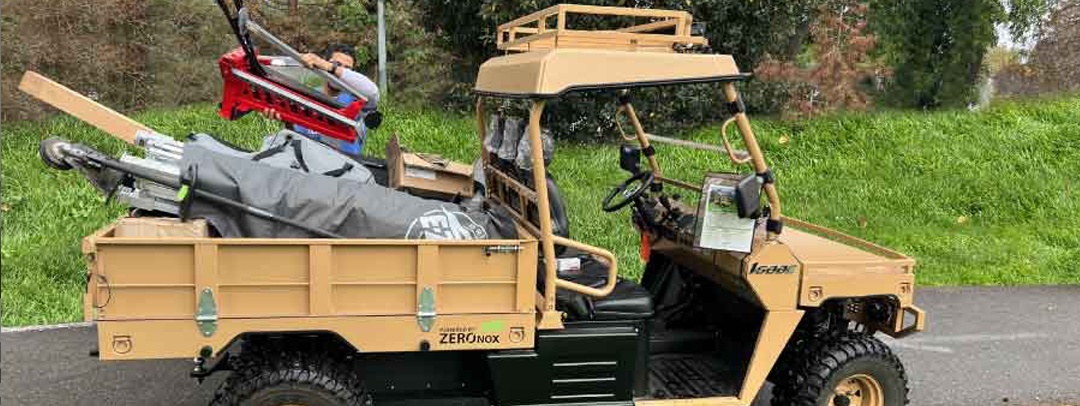Making the Move to Electric Utility Vehicles
Transition costs, power capacity and infrastructure are among factors managers need to consider when transitioning from gas machines.
By Dan Mabe, Contributing Writer
On the surface, the process of transitioning gasoline-powered fleets to electric utility vehicles (EUV) fleet seems straightforward: Replace the current gas models with new electric versions.
Of course, the decision is much more complex.
Managers can choose from among several EUVs ranging from $15,000 to $35,000 per vehicle. Models include golf cart-style units to rugged all-terrain vehicles. Several factors that grounds managers at institutional and commercial facilities should consider to make a successful transition include noise and emission benefits, battery choices, gas vs. electric power myths and misconceptions, electrical infrastructure and budgeting to make the conversion.
Transition process
Managers must do their research and homework before initiating a transition. Meaningful planning will save time and money down the road. Consider four steps to help make the decision.
- Managers should understand the way equipment operators and mechanics feel about the transition. Are they open-minded, dead set in their ways or somewhere in between? Do they understand the rationale for the transition? What are their objections or perceived challenges to the transition? Understanding these responses will indicate what managers need in order to garner their support and smooth the transition. This step is where workforce training from the dealer and manufacturer can be most valuable, especially if workers are not enthusiastic about making the switch.
- Make sure the workforce is properly trained to safely operate, store and charge EUVs, which differ greatly from conventional gas models. Reputable dealers and manufacturers should supply comprehensive training on their products to ensure safety and long-term success.
- Understand the facility’s terrain to assess EUV workload feasibility. This step should take into account the size, layout and distances needed to cover all the work areas on the property. Does the campus include numerous slopes and hills, or is the terrain relatively flat? How much weight will the EUVs be hauling? All these considerations affect the working time of the EUV and need to be factored into product selection.
- Examine which manufacturer, make and model best meets workload and property needs. Following this process will help make informed product choices essential to a successful transition.
Noise and emissions
Why consider transitioning from gas to battery electric EUVs? The benefits are many. Among them are noise, carbon dioxide, ground level ozone and fine-particulate emission reductions. Noise is reduced by as much as 70 percent, depending on the gas model replaced. A quieter environment will benefit the health and well-being of workers, wildlife and communities.
EUVs produce zero emissions at the point of operation. Even if the electricity used to charge the batteries is supplied by fossil fuel sources, EUVs are a much lower-polluting alternative. If the electricity comes from renewable energy sources, most emissions are eliminated apart from the footprint related to manufacturing and building power plants.
The New England Botanic Garden at Tower Hill recently became the first American Green Zone Alliance (AGZA) Certified Green Zone botanic garden in the nation. As part of this effort, the garden is converting its utility vehicle fleet from gas utility vehicles to EUVs. The garden will reduce its carbon footprint by more than 40 tons each year, equivalent to taking eight cars off the road or planting nearly 1,700 trees. The data is verified and substantiated by Environmental Landscape Footprint (ELF), software that measures impacts of outdoor vehicle and landscape maintenance activities.
Dan Mabe is the founder and president of the American Green Zone Alliance (AGZA), www.agza.net, and has experience in grounds maintenance operations. AGZA hosts the first certification organization to train and certify professionals in advanced electric technologies and certify battery electric equipment in real world maintenance settings. Visit sustainablelandcare.org for information on online electric workforce training certificate courses.

